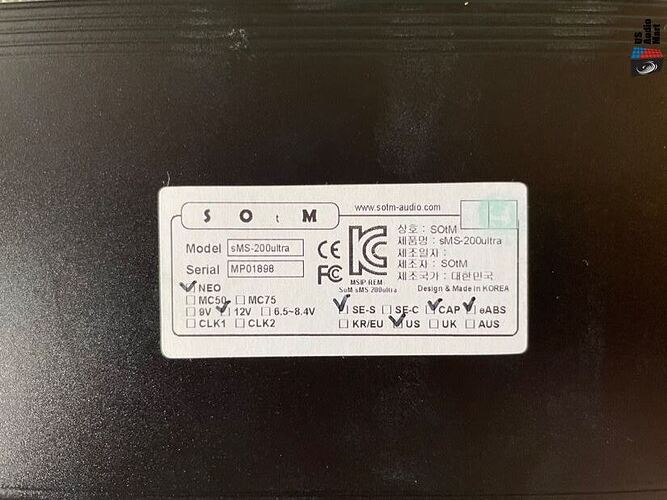This is the closest thread I can ask this question in… shot in the dark but might as well. Can anyone interpret the following Sotm Ultra Neo label? I got the easy parts. It’s a NEO, with the conversion to 12v, US plug. But does the rest of the label indicate that this one has the cap upgrade and the Silver cabling? No idea what the eABS means.
EDIT: never mind, answered my own question.
About the sMS-200ultra Special Edition
For audiophiles who are looking for the best sound quality with their sMS-200ultra, the sMS-200ultra Crux Audio Special Edition further upgrades this fantastic network player with the addition of eABS-200 EMI absorber sheet (eliminating EMI noise), replacing internal wires with 7N-UPOCC silver or copper wires, and upgrading existing capacitors with EVOX capacitors.
The sMS-200ultra Crux Audio Special Edition already includes the sCLK-EX clock — the heart of this superior digital audio equipment. This new combination brings dramatic sound improvement.
